Those who died in the Great War
World War II Honours Board here...

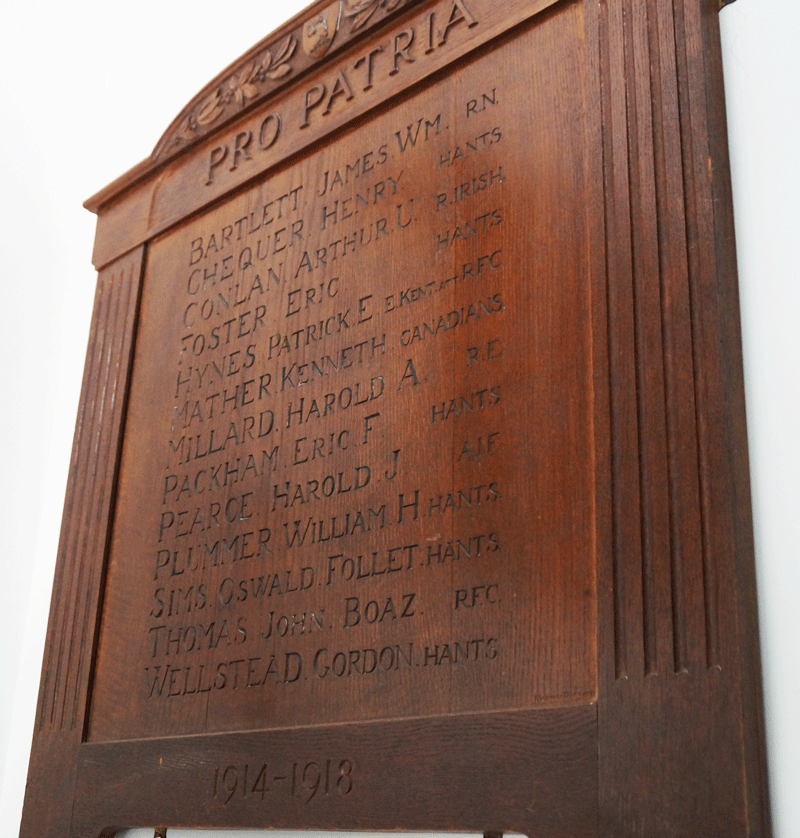
| Bartlett, James Wm. | RN |
| Chequer, Henry | 1st Batt, Hants |
| Conlan, Arthur U. | R. Irish |
| Foster, Eric | Hants |
| Hynes, Patrick E. | East Kent att. RFC |
| Mather, Kenneth | Canadians |
| Millard, Harold Austin | RE |
| Packham, Eric F. | Hants |
| Pearce, Harold J. | AIF |
| Plummer, William A. | Hants |
| Sims Oswald Follet | Hants |
| Thomas, John Boaz | RFC |
| Wellstead, Gordon | Hants (actually Wilts) |
| Additional Information: | Son of Walter James Bartlett, of Maylings Brickyard, Fareham. |
| Memorial: | PORTSMOUTH NAVAL MEMORIAL, Hampshire, United Kingdom |
| Grave Reference/ Panel Number: |
15. |
| Location: | The Memorial is situated on Southsea Common
overlooking the promenade, and is accessible at all times. |
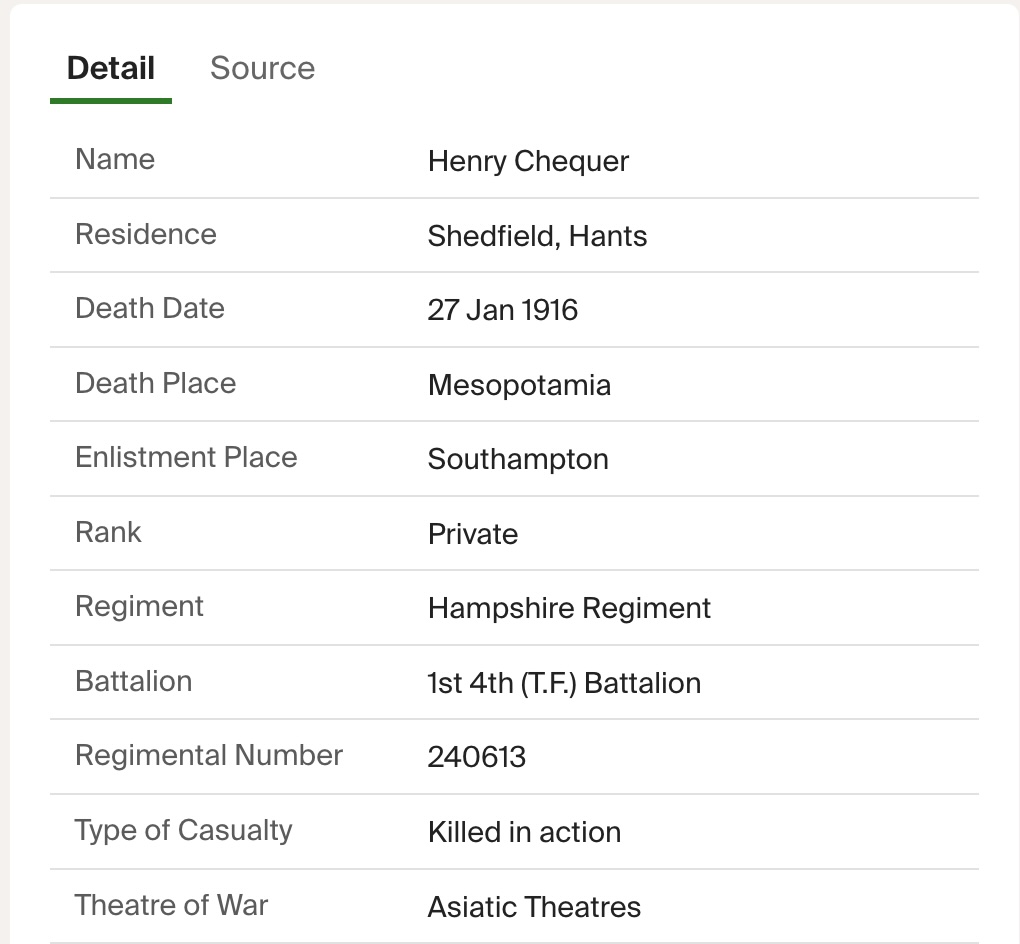
| Memorial: | ARRAS MEMORIAL, Pas de Calais, France |
| Grave Reference/ Panel Number: |
Bay 10 |
| Location: | The Arras Memorial is in the
Faubourg-d'Amiens Cemetery, which is in the Boulevard du General de
Gaulle in the western part of the town of Arras. The cemetery is near
the Citadel, approximately 2 kilometres due west of the railway station.
The Memorial commemorates almost 35,000 casualties of the British, New
Zealand and South African Forces who died between Spring 1916 and 7th
August 1918, with the exception of casualties of the Battle of Cambrai
in 1917, and who have no known grave. The design, by Sir Edwin Lutyens,
consists of a cloister, 25 feet high and 380 feet long, built up on
Doric columns and faces west. In the broader part of the site the
colonnade returns to form a recessed and open court, terminated by an
apse. The names of the casualties are carved on stone panels fixed to
the cloister walls. |
| Historical Information: | The Memorial commemorates almost 35,000 casualties of the British, New Zealand and South African Forces who died between Spring 1916 and 7th August 1918, excluding casualties of the Battle of Cambrai in 1917, and who have no known grave. The design, by Sir Edwin Lutyens, consists of a cloister built upon Doric columns and faces west. In the broader part of the site the colonnade returns to form a recessed and open court, terminated by an apse in front of which is the Arras Flying Services Memorial. The names of the casualties are carved on stone panels which are fixed to the cloister walls. |
| Additional Information: | Son of Mrs. Mary Ann Foster, of 18, Aylesbury Rd., Copnor, Portsmouth. |
| Memorial: | YPRES (MENIN GATE) MEMORIAL, Ieper, West-Vlaanderen, Belgium |
| Grave Reference/ Panel Number: |
Panel 35 |
| Location: | Ypres (now Ieper) is a town in the Province
of West Flanders. The Memorial is situated at the eastern side of the
town on the road to Menin (Menen) and Courtrai (Kortrijk). |
| Additional Information: | Son of Harry H. and Edith Hynes. |
| Cemetery: | LAPUGNOY MILITARY CEMETERY, Pas de Calais, France |
| Grave Reference/ Panel Number: |
II. F. 1. |
| Location: | Lapugnoy is a village 6 kilometres west of
Bethune. From the centre of Lapugnoy, head south-west on the D70 in the
direction of Marles-les-Mines. On the outskirts there is a crucifix at
the side of the main road, turn right here towards Allouagne. After
approximately 500 metres there is a track on the left hand side (the
Cemetery is signposted here) and the Cemetery can be found on the left
hand side, approximately 500 metres, along this track. |
| Historical Information: | The Cemetery site was chosen in the summer of 1915, in preparation for the coming British offensive; and the first burials took place in September, in Plot I, the furthest from the road. Plot II was not filled until 1917; but in April, 1917, the Battles of Arras began and the Cemetery had reached the road by the middle of September. Fresh plots were then made on the West side, from the road, almost as far back as the Southern boundary. The dead were brought from the Casualty Clearing Stations at Lapugnoy and Lozinghem (chiefly the 18th and the 23rd), except between May and August, 1918, when fighting units buried in this Cemetery. There are now nearly 1,500, 1914-18 and a small number of 1939-45 war casualties commemorated in this site. The cemetery covers an area of 6,199 square metres. |
| Additional Information: | Son of Edwin Ernest and Alice Ada Mather, of Bristol. |
| Cemetery: | CRUCIFIX CORNER CEMETERY, VILLERS-BRETONNEUX, Somme, France |
| Grave Reference/ Panel Number: |
I. D. 17. |
| Location: | Villers-Bretonneux is a village in the
Department of the Somme, and lies on the N29 road from Amiens to St
Quentin. Enter the village of Villers-Bretonneux on the D23 heading
south. At the crossroads head in the direction of Demuin and Mozeuil,
remaining on the D23. Two CWGC signposts will be seen. On leaving the
village, carry on south for 2 kilometres, still on the D23 Demuin road.
After passing over the A29 Motorway (Amiens-St Quentin), the cemetery is
signposted down a side road on the right. |
| Historical Information: | The site became famous in 1918, when the German advance on Amiens ended (on the 23rd April) in the capture of Villers-Bretonneux by German tanks and infantry. On the following day the 4th Australian and 5th Australian Divisions, with units of the 8th and 18th Divisions, carried out "an enterprise of great daring",* and recaptured the whole of the village. The Cemetery was begun by the Canadian Corps in August, 1918, and closed in the same month; the original British Cemetery (now Plot I, Rows A to D) contained 90 burials, and French troops buried in Plot II at the same time. The Cemetery was greatly enlarged after the Armistice by the concentration of graves from the battlefields between the Somme and the Luce. There are now over 650, 1914-18 war casualties commemorated in this site. Of these, nearly 200 are unidentified and memorials are erected to one soldier from the United Kingdom and one from Australia, known or believed to be buried among them. Sixteen American, 241 French and ten German graves have since been removed to other places of burial. The Cemetery covers an area of 3,012 square metres and is enclosed by a curb. A ruined Crucifix, from which the place was named, is near the entrance. The only considerable British burial ground concentrated into this cemetery was:- VAIRE WOOD CEMETERY, VAIRE-SOUS-CORBIE, near the West side of the Bois de Vaire. Here were buried 26 soldiers from Australia and one from the United Kingdom who fell in July and August, 1918. * Sir Douglas Haig's Despatch of the 20th July, 1918. |
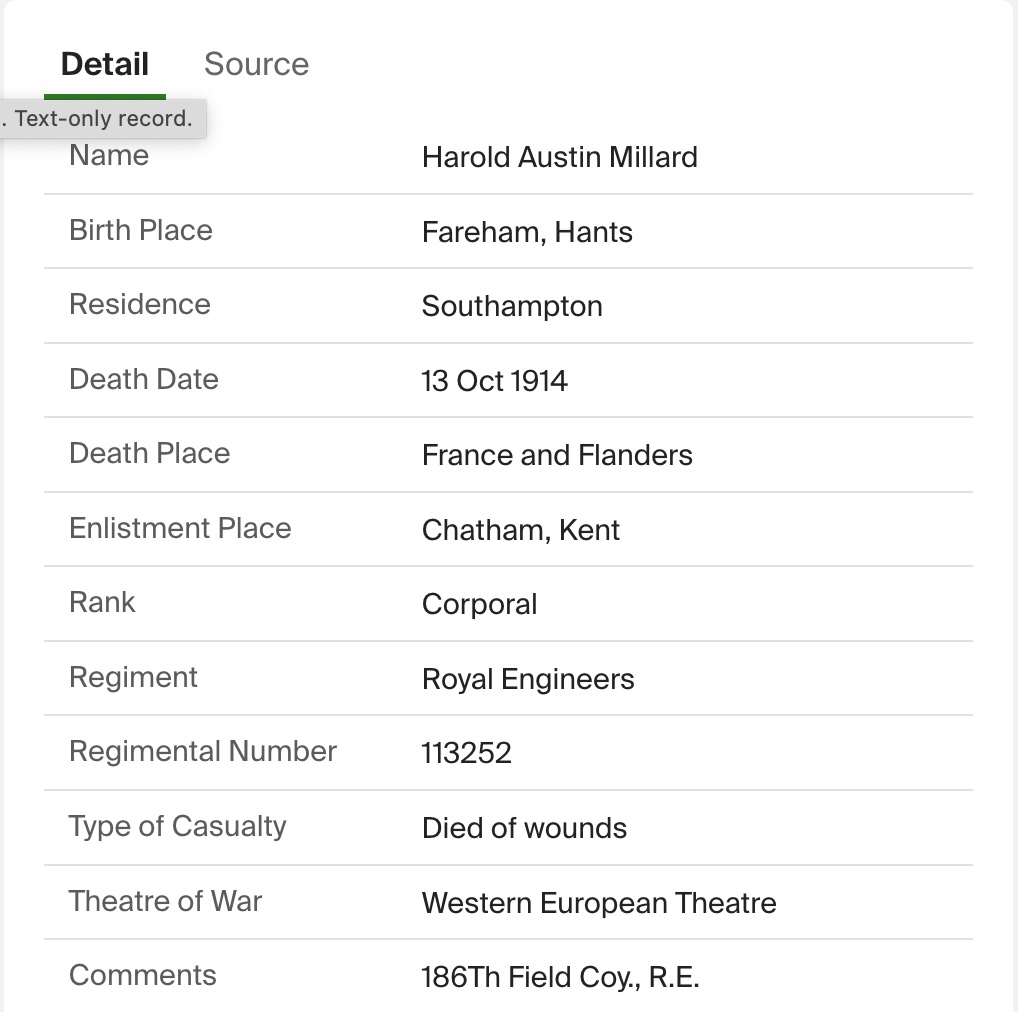
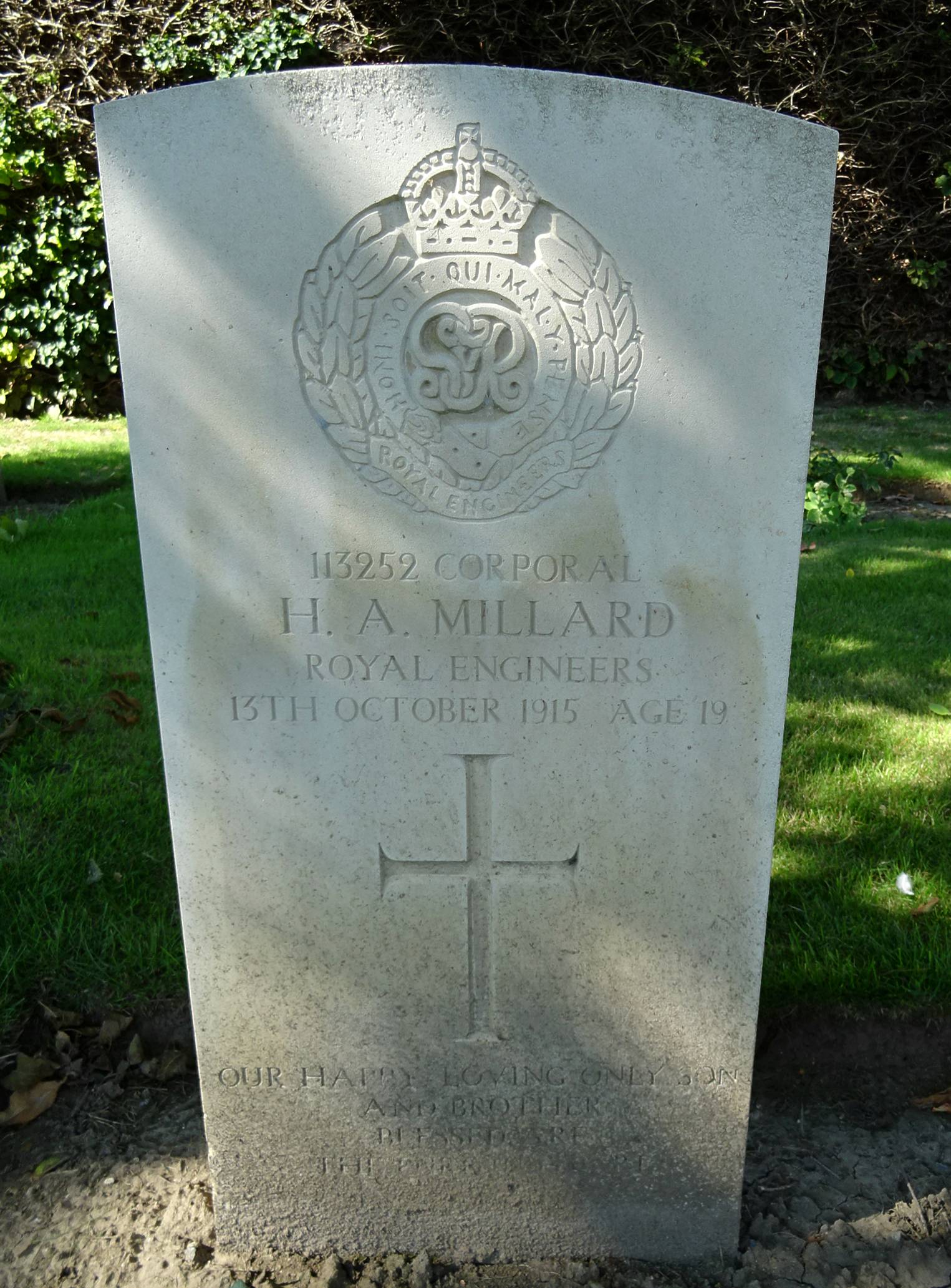
| Cemetery: | CROFTON (HOLY ROOD) OLD CHURCHYARD, Hampshire, United Kingdom |
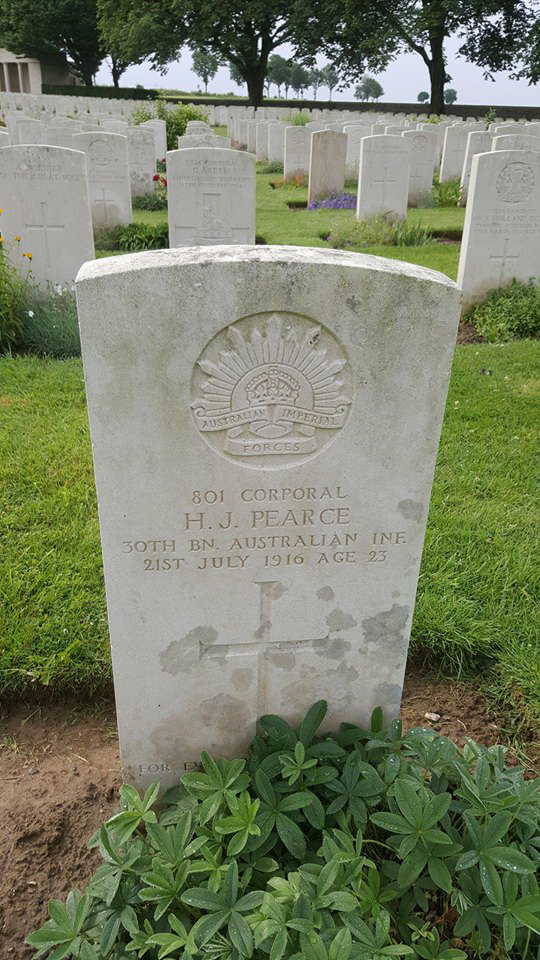
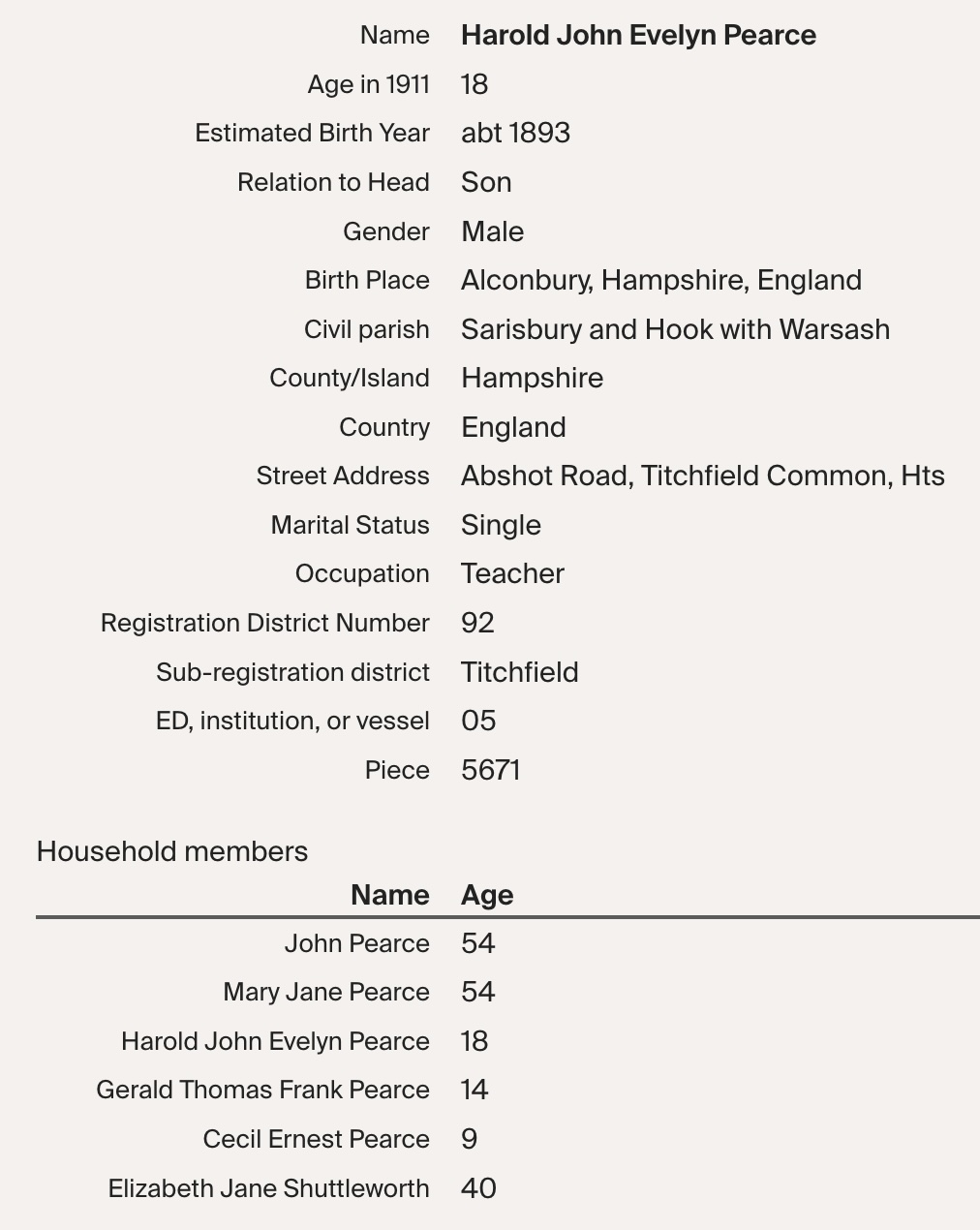
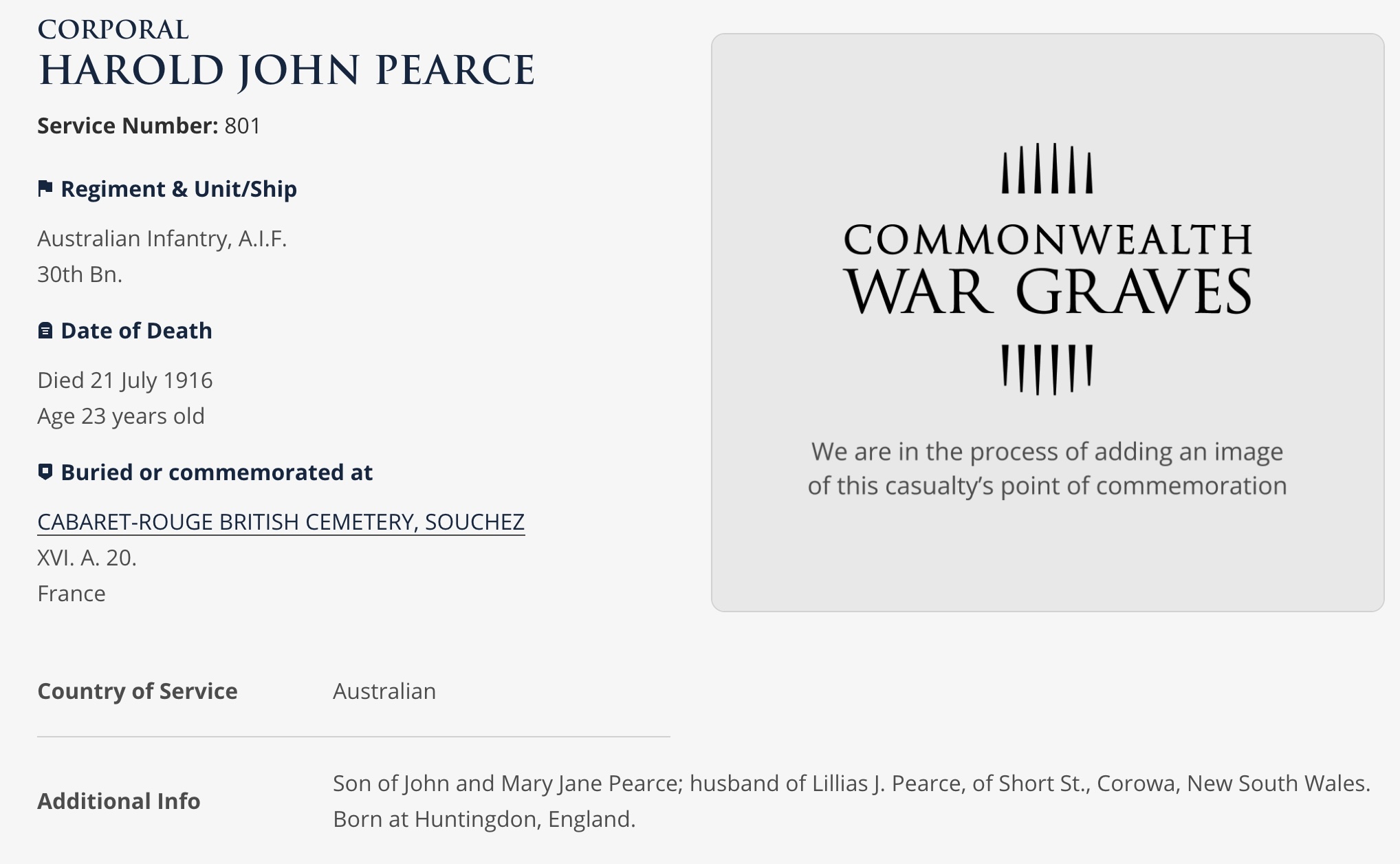
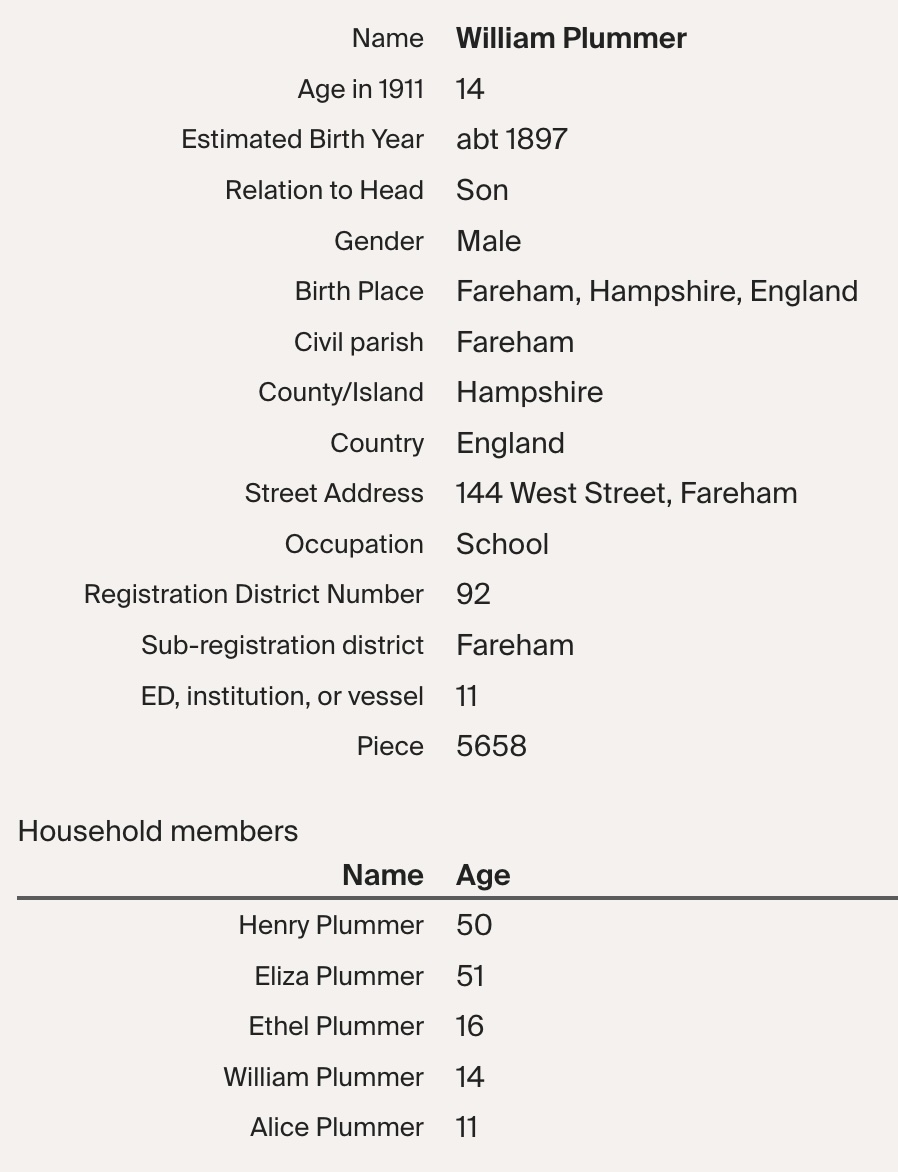
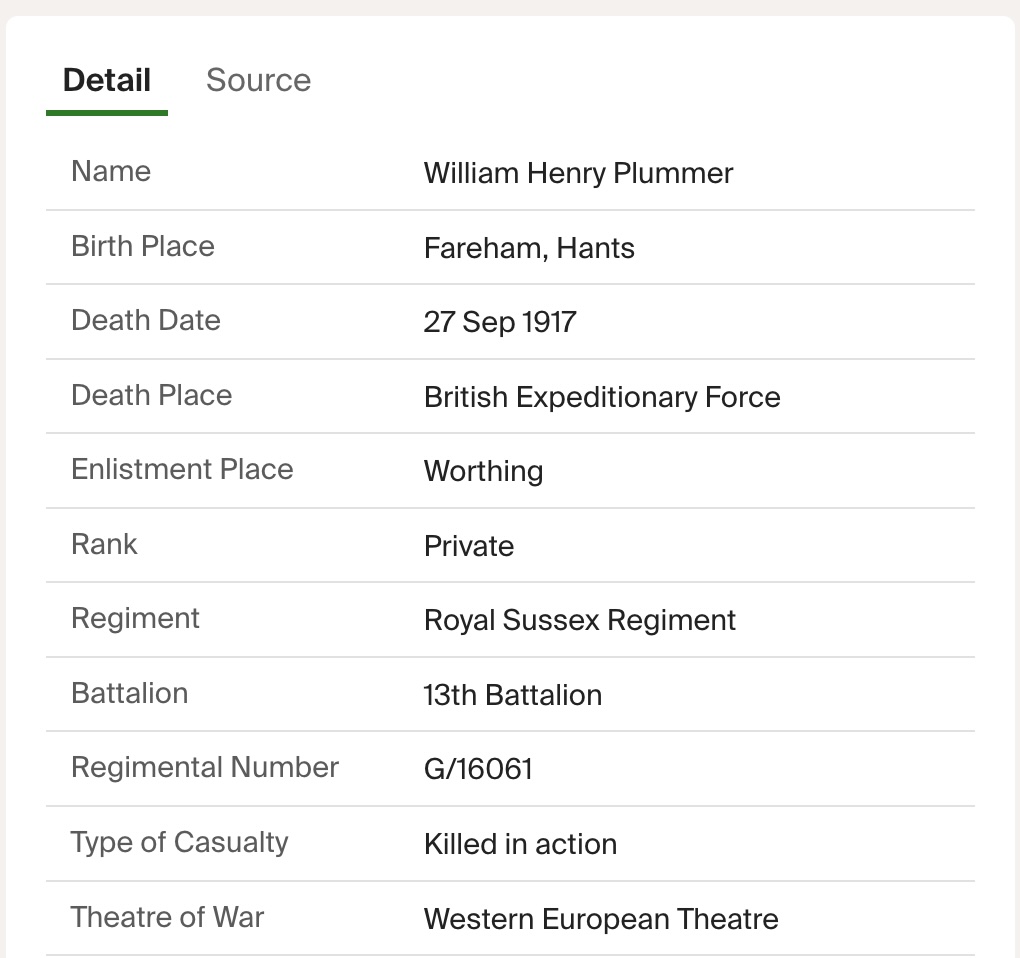
| Citation: | |
| Additional Information: | Son of Ebenezer and Elizabeth Sims, of The School House, Bishop's Waltham, Hants. |
|
Commemorative Information - |
|
| Cemetery: | GROVE TOWN CEMETERY, MEAULTE, Somme, France |
| Grave Reference/Panel Number: | II. M. 8. |
| Location: | Meaulte
is a village a little south of Albert. Leave Albert by heading
south-east on the D329 in the direction of Meaulte. Go through the
village of Meulte in the direction of Bray-sur-Somme. After leaving
Meulte, 2.5 kilometres down the road turn right towards Etinehem (C6)
heading south. The first CWGC signpost is at this turn off. Follow the
C6 for 0.8 kilometres and then follow the second CWGC signpost
indicating a right turn down a dirt track. Carry straight on down the
dirt track for 0.4 kilometres and Grove Town British Cemetery is on the
left hand side of this track. - |
| Historical Information: | In September 1916, the 34th and 2/2nd London Casualty Clearing Stations were established at this point, known to the troops as Grove Town, to deal with casualties from the Somme battlefields. They were moved in April 1917 and, except for a few burials in August and September 1918, the cemetery was closed. Grove Town Cemetery contains 1,392 First World War burials. The cemetery was designed by Sir Edwin Lutyens. |
| Additional Information: | Son of the late John Boase Thomas, of Poplars, Curdridge, Hants. |
| Cemetery: | MAALA CEMETERY, Yemen |
| Additional Information: | Son of Charles and Naomi Ruth Wellstead,
of Abshott Rd., Titchfield Common, Fareham, Hants. Born 59 Beacon Bottom, Swanwick, Southampton. During the First World War, the village of Lijssenthoek was situated on the main communication line between the Allied military bases in the rear and the Ypres battlefields. Close to the Front, but out of the extreme range of most German field artillery, it became a natural place to establish casualty clearing stations. The cemetery was first used by the French 15th Hopital D'Evacuation and in June 1915, it began to be used by casualty clearing stations of the Commonwealth forces. From April to August 1918, the casualty clearing stations fell back before the German advance and field ambulances (including a French ambulance) took their places. The cemetery contains 9,893 Commonwealth burials of the First World War, a few of which were brought in from the battlefields after the Armistice, and 883 war graves of other nationalities, mostly French and German. It is the second largest Commonwealth cemetery in Belgium. The cemetery was designed by Sir Reginald Blomfield. |